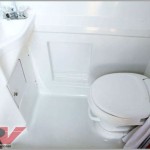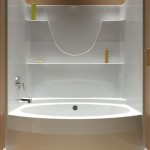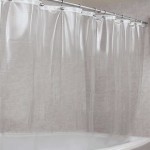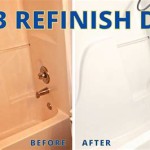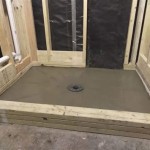Mold Behind Silicone Caulk In Shower: Essential Aspects
Mold growth behind silicone caulk in showers is a common problem that can lead to health risks and an unsightly appearance. Here are some essential aspects to understand about this issue:
Causes of Mold Growth
Mold thrives in warm, moist environments, such as behind silicone caulk in showers. The following factors can contribute to mold growth:
- Poor ventilation: Inadequate ventilation allows moisture to accumulate, creating a favorable environment for mold.
- Leaks or water damage: Water leaks or condensation can saturate the caulk, providing a moisture source for mold.
- Old or damaged caulk: Over time, caulk can crack or deteriorate, allowing water and moisture to seep behind it.
- Lack of proper cleaning: Regular cleaning and disinfection are essential to prevent mold growth.
Health Risks
Mold exposure can cause a range of health problems, including:
- Allergic reactions: Mold spores can trigger allergic reactions, such as sneezing, coughing, and watery eyes.
- Respiratory problems: Mold exposure can lead to respiratory issues, such as asthma and bronchitis.
- Skin irritation: Prolonged contact with mold can cause skin irritation and rashes.
- Infections: In severe cases, mold exposure can lead to infections, especially for individuals with compromised immune systems.
Prevention and Removal
To prevent and remove mold behind silicone caulk in showers, follow these steps:
- Improve ventilation: Install exhaust fans or open windows to improve airflow and reduce moisture.
- Fix leaks promptly: Repair any water leaks or sources of condensation as soon as possible to eliminate moisture.
- Inspect and replace caulk: Regularly inspect caulk for cracks or damage and replace it as needed.
- Clean and disinfect regularly: Use a mold-killing cleaner to clean the caulk and surrounding area regularly to prevent mold growth.
- Use mold-resistant caulk: When replacing caulk, choose a mold-resistant variety to minimize the risk of future growth.
Professional Assistance
In some cases, mold growth behind silicone caulk in showers may be severe or difficult to remove. If you encounter persistent mold problems or suspect extensive growth, it is advisable to seek professional assistance from a mold remediation specialist. They can safely assess the situation, remove the mold, and recommend measures to prevent future growth.
Conclusion
Mold growth behind silicone caulk in showers is a potential health hazard and unsightly nuisance. By understanding the causes, health risks, and prevention methods, you can effectively manage this problem and maintain a clean and healthy bathroom environment.

I Found Mold In The Shower Caulking What Should Do

How To Remove Mold From Shower Caulking Tips Tricks And Secrets

How To Remove Mold From Shower Caulking Tips Tricks And Secrets

How To Remove Mold From Shower Caulking Home Like You Mean It
How To Clean Black Mold Off Silicone In The Shower All Coast Inspections
Why Does Silicone Sealant Turn Mouldy The Bathroom Marquee

How To Remove Mold From Shower Caulking Tips Tricks And Secrets
How To Clean Mildew From Silicone Seals In The Shower Post

How To Remove Mold From Shower Caulking Correct
The Caulking And Some Grout Came Out Of My Shower Wall Do I Need To Re Or Can Just Caulk Over It Quora
Related Posts

